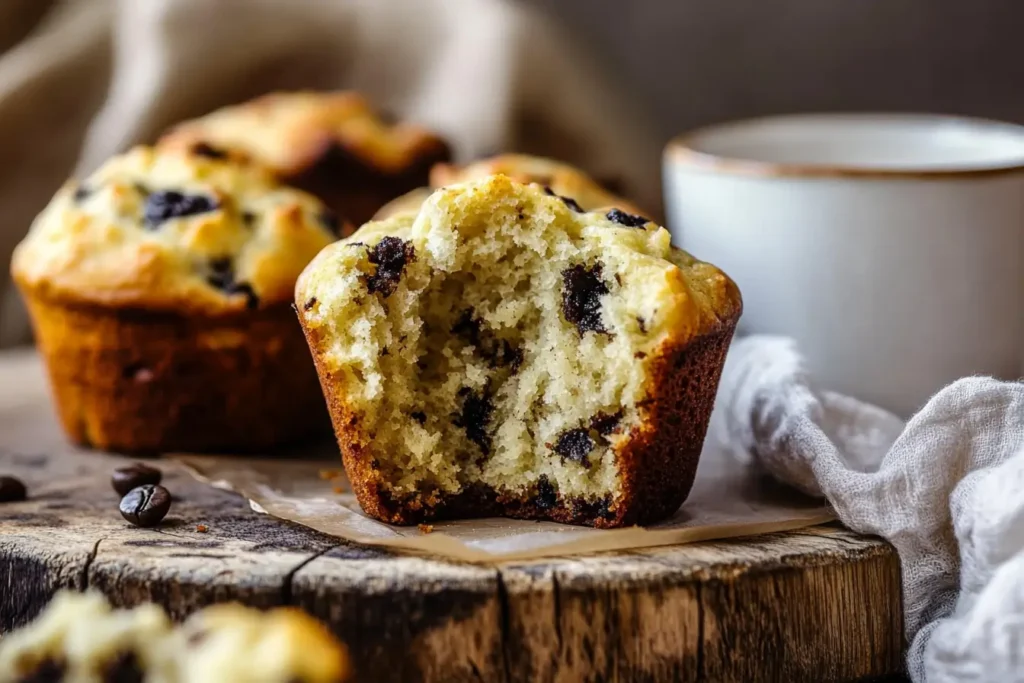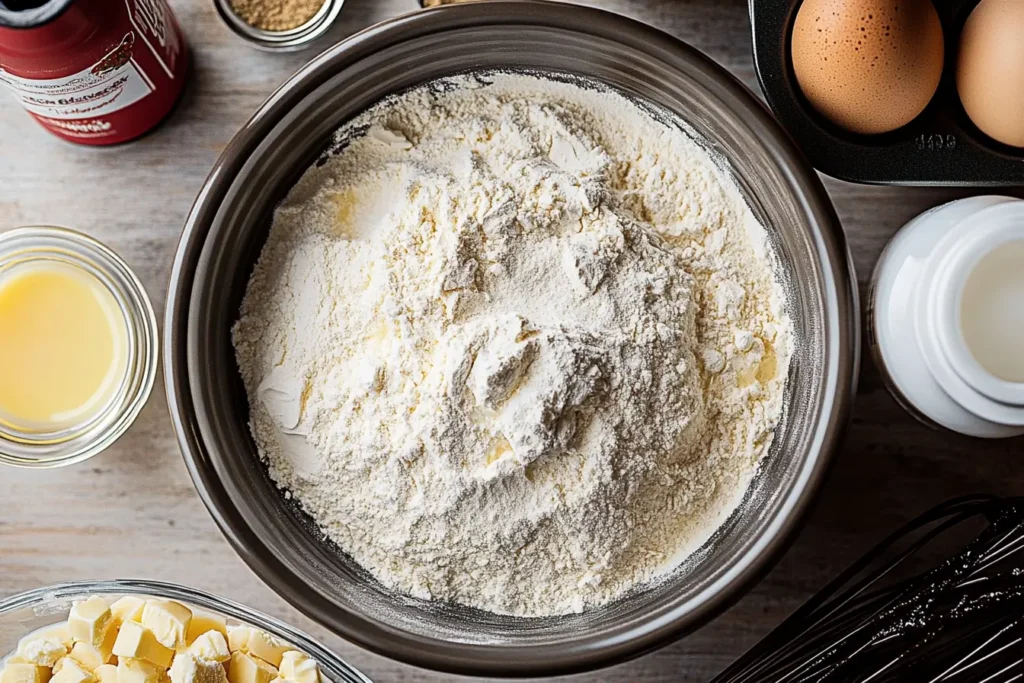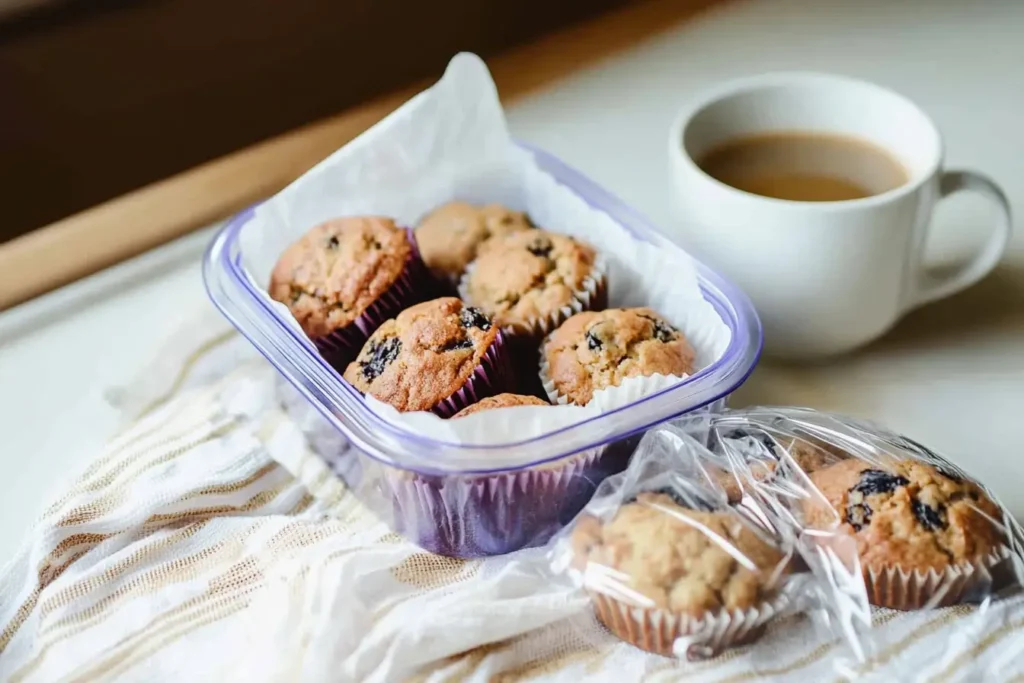Have you ever taken a bite of a muffin only to find it dry and crumbly instead of soft and fluffy? If so, you’re not alone! Many home bakers ask, how can I make my muffins more moist? The secret lies in using the right ingredients, perfecting your baking techniques, and storing them properly to lock in freshness.
In this guide, we’ll explore foolproof ways to achieve moist, tender muffins every time. From choosing the best fats and dairy to incorporating natural moisture boosters like fruit and honey, we’ll cover all the tricks you need. Plus, we’ll share storage tips to keep your muffins delicious for days. Get ready to elevate your baking game and enjoy perfectly moist muffins with every batch!
Table of Contents
Understanding the Science of Moist Muffins

Before we dive into ingredients and techniques, it’s important to understand why some muffins turn out dry while others stay moist. Baking is a science, and every ingredient plays a role in the final texture of your muffins.
Why Moisture Matters in Muffins
Moist muffins aren’t just about taste—they affect the overall eating experience. Dry muffins tend to crumble, making them messy and less enjoyable. Moist muffins, on the other hand, have a soft, tender crumb that practically melts in your mouth.
Moisture retention also impacts the shelf life of your muffins. A well-balanced recipe keeps muffins fresher for longer, preventing them from drying out too quickly.
The Role of Ingredients in Muffin Texture
Every ingredient in your muffin batter has a job to do. Here’s how key components affect moisture:
- Flour: Using too much flour can result in dry muffins. All-purpose flour is commonly used, but cake flour can make muffins softer.
- Fat (Butter vs. Oil): Butter adds flavor but can make muffins denser. Oil, especially vegetable or coconut oil, helps retain moisture better.
- Dairy: Ingredients like buttermilk, yogurt, and sour cream provide extra moisture and a tender texture.
- Sugar & Sweeteners: Brown sugar, honey, or maple syrup attract and hold onto moisture better than white sugar.
Common Mistakes That Lead to Dry Muffins
Even with the best ingredients, small mistakes can lead to dry muffins. Watch out for these:
- Overmixing the Batter: Mixing too much develops gluten, making muffins tough and dry. Stir just until combined.
- Baking Too Long or at the Wrong Temperature: Overbaking sucks out moisture. Always check for doneness with a toothpick—if it comes out with a few moist crumbs, they’re done!
- Not Enough Liquid or Fat: Skimping on wet ingredients results in dry muffins. Stick to the recipe’s liquid ratios.
Now that you understand the science behind moist muffins, let’s move on to selecting the best ingredients in Part 2! Stay tuned!
Choosing the Right Ingredients for Moist Muffins

The key to moist muffins starts with the right ingredients. Choosing the right fats, dairy, and sweeteners can make a world of difference. Let’s explore the best ingredients that will keep your muffins soft and tender.
Flour Selection: All-Purpose vs. Cake Flour
Not all flour is created equal. All-purpose flour is the most common choice for muffins, but if you want an ultra-soft texture, try cake flour. It has a lower protein content, which means less gluten development and a more tender crumb.
For whole wheat muffins, use whole wheat pastry flour instead of regular whole wheat—it retains moisture better and prevents a dense texture.
The Power of Fats: Butter vs. Oil for Moisture
Fat is crucial for moisture and richness. But should you use butter or oil?
- Butter adds flavor, but it contains water, which can lead to drier muffins.
- Oil (vegetable, canola, or coconut) retains more moisture since it’s 100% fat. If you’re wondering, how can I make my muffins more moist?—using oil instead of butter is one of the easiest fixes!
For the best of both worlds, consider a mix: half butter for flavor, half oil for moisture.
Using Dairy for a Soft and Tender Texture
Dairy-based ingredients add both moisture and acidity, which helps muffins stay soft. Some of the best options include:
- Buttermilk: Adds tang and prevents dryness.
- Sour Cream: Creates a dense yet ultra-moist texture.
- Greek Yogurt: A healthier option that also adds creaminess.
Using full-fat versions of these ingredients will yield better results than low-fat alternatives.
Eggs and Their Role in Muffin Moistness
Eggs provide structure and stability, but too many can make muffins rubbery. Stick to the number in the recipe. If you need extra moisture, replace one egg with a mashed banana, applesauce, or yogurt.
Sweeteners That Lock in Moisture
Sugar does more than add sweetness—it retains moisture. For the best texture:
- Use brown sugar instead of white—it contains molasses, which keeps muffins softer for longer.
- Swap in honey, maple syrup, or agave syrup for extra moisture.
- A spoonful of corn syrup or golden syrup can help if your muffins tend to dry out too fast.
Now that you know which ingredients to use, let’s move on to baking techniques that ensure your muffins stay moist.
Best Baking Techniques to Retain Moisture
Even with the best ingredients, bad baking habits can ruin your muffins. Follow these techniques to keep your muffins from drying out.
Mixing Methods: How Overmixing Leads to Dry Muffins
One of the biggest mistakes is overmixing the batter. When you overmix, you create too much gluten, leading to tough and dense muffins.
The right way to mix muffin batter:
- Combine all the wet ingredients first.
- In a separate bowl, combine the dry ingredients.
- Gently fold the wet and dry together—just until no flour streaks remain.
Lumpy batter is okay! Overmixing is a surefire way to end up with dry muffins.
Baking Temperature and Its Effect on Moisture
Temperature matters more than you think. Here’s why:
- Too high: The outside bakes too fast, leaving the inside dry.
- Too low: Muffins won’t rise properly, leading to dense results.
The ideal baking temperature for muffins is 350°F (175°C). Some bakers start at 400°F for the first 5 minutes, then lower it to 350°F to encourage a tall rise while maintaining moisture.
Preheating and Proper Oven Placement
Never put muffins into a cold oven! Always preheat for even baking. Also, place the muffin tray in the middle rack—too close to the top or bottom can cause uneven cooking and dryness.
Don’t Overbake: The Toothpick Trick
Overbaking is the number one cause of dry muffins. To avoid this:
- Check for doneness 2–3 minutes before the suggested baking time.
- Insert a toothpick in the center—if it comes out with a few moist crumbs, they’re ready!
- If the toothpick is completely dry, your muffins are likely overbaked.
Cooling Muffins the Right Way
Cooling is just as important as baking. If you leave muffins in the hot pan too long, they’ll dry out. Instead:
- Let them sit in the pan for 5 minutes.
- Move them to a wire rack to cool completely.
- If storing for later, wrap them in plastic wrap to trap moisture.
By using these foolproof baking techniques, you’ll ensure your muffins stay soft and fluffy every time!
Moisture-Boosting Additions to Your Muffin Batter
Even the best muffin recipe can be made even better by adding ingredients that naturally boost moisture. If you’ve ever wondered, how can I make my muffins more moist?, these ingredients are game-changers.
Using Fruits and Vegetables for Natural Moisture
Fruits and veggies aren’t just for health—they bring natural sugars and moisture to your muffins. Some of the best choices include:
- Bananas – Naturally creamy and sweet, mashed bananas keep muffins moist while adding flavor.
- Applesauce – A great substitute for oil or butter, applesauce locks in moisture.
- Pumpkin Puree – Not just for fall! Pumpkin puree adds depth and a soft crumb.
- Zucchini or Carrots – Grated zucchini or carrots add a subtle sweetness while keeping muffins moist.
For a fun twist, check out these creative ways to jazz up banana muffin mix.
Adding Yogurt, Sour Cream, or Buttermilk
Dairy is one of the best-kept secrets for a rich and moist texture. Here’s how each option works:
- Greek Yogurt – Thick and creamy, it makes muffins tender.
- Sour Cream – Adds richness without making the batter too heavy.
- Buttermilk – Slightly tangy, it reacts with baking soda for a fluffier texture.
Use full-fat versions whenever possible for maximum moisture retention.
Honey, Maple Syrup, and Other Liquid Sweeteners
Liquid sweeteners not only enhance flavor but also keep muffins moist. Try using:
- Honey – Adds natural sweetness while attracting moisture.
- Maple Syrup – A great alternative to sugar with a deep, caramel-like taste.
- Molasses – Works especially well in bran or spice muffins.
To avoid making the batter too runny, replace about ¼ of the sugar with a liquid sweetener and adjust the flour slightly.
Why You Should Consider Pudding Mix or Mayonnaise
Some bakers swear by these unexpected ingredients:
- Pudding Mix – The cornstarch in pudding mix helps retain moisture. Vanilla or banana flavors work well.
- Mayonnaise – It may sound odd, but mayo (which is just eggs and oil) keeps muffins ultra-soft. Try replacing 1 tablespoon of butter with mayonnaise for a richer texture.
Now that we’ve covered how to make muffins extra moist, let’s explore how to store them properly so they don’t dry out!
Storage Tips to Keep Muffins Moist

Even if your muffins come out perfectly moist, improper storage can make them dry in no time. Follow these tips to keep them fresh and soft.
The Best Way to Store Muffins to Prevent Drying Out
The best way to keep muffins moist is to store them in an airtight container. Here’s how:
- Let them cool completely – Trapping warm air inside a container can make muffins soggy.
- Use a paper towel – Line the bottom of an airtight container with a paper towel to absorb excess moisture.
- Keep them at room temperature – Refrigeration can dry muffins out unless they contain dairy or fruit fillings.
For muffins with high moisture content (like banana or pumpkin), check out this guide on why banana muffins sometimes turn soggy.
Should You Refrigerate Muffins? Pros and Cons
Refrigeration can extend shelf life, but it also dries muffins out quickly. Only refrigerate muffins if they contain dairy-based fillings or fresh fruit.
If refrigerating:
- Store in an airtight container.
- Warm them in the microwave for 10–15 seconds before eating.
For best results, freeze muffins instead of refrigerating if you need long-term storage.
How to Reheat Muffins Without Losing Moisture
Reheating the wrong way can make muffins dry or rubbery. Here’s the best way to warm them up:
- Microwave: Wrap the muffin in a damp paper towel and heat for 10–15 seconds.
- Oven: Wrap muffins in foil and warm at 300°F (150°C) for 5–10 minutes.
- Steam Method: Place muffins in a steamer for a few minutes to reintroduce moisture.
By using the right storage and reheating techniques, you can enjoy soft, fluffy muffins for days!
Common Muffin Problems and How to Fix Them
Even experienced bakers run into muffin troubles from time to time. Dry, dense, or sunken muffins can be disappointing, but they’re easy to improve once you identify the cause. If you’ve been wondering, how can I make my muffins more moist?, this section will help you troubleshoot common problems.
Why Are My Muffins Dense Instead of Moist?
A dense muffin is usually a sign of too much mixing, not enough leavening, or using the wrong type of flour. Here’s how to fix it:
- Avoid overmixing – Stir the batter just until combined to prevent too much gluten formation.
- Check your baking powder and baking soda – Expired leaveners won’t give muffins the lift they need.
- Use the right flour – Stick to all-purpose or cake flour instead of dense whole wheat.
How to Fix Muffins That Turn Out Too Dry
If your muffins are coming out dry, chances are you’re making one of these mistakes:
- Overbaking – Check for doneness a few minutes before the timer goes off. A toothpick should come out with a few moist crumbs, not bone dry.
- Not enough fat or liquid – Butter, oil, or yogurt adds moisture. Try increasing the fat content slightly.
- Too much flour – Overmeasuring flour can lead to a dry, crumbly texture. Use the spoon and level method rather than scooping directly from the bag.
Can I Salvage Overbaked Muffins?
If your muffins have already dried out, don’t worry—you can still save them!
- Wrap them in a damp paper towel and microwave for 10 seconds – This restores some moisture.
- Brush with simple syrup (sugar + water) – A light coating can bring back some softness.
- Serve with spreads – Butter, honey, or jam can mask a slightly dry texture.
With these quick fixes, you’ll never have to throw away a batch of muffins again! Now, let’s move on to some common FAQs about muffins.
FAQs
What is the most popular muffin in the world?
Blueberry muffins hold the title for the most popular muffin worldwide! Their balance of sweetness and tartness makes them a favorite in coffee shops and bakeries everywhere. If you’re a fan, try using fresh blueberries and a touch of buttermilk to make them extra moist.
How to jazz up banana muffin mix?
If you’re using a store-bought banana muffin mix, there are plenty of ways to make it taste homemade! Try adding:
- A dollop of Greek yogurt or sour cream for extra moisture.
- Mix-ins like chocolate chips, walnuts, or shredded coconut.
- A swirl of honey or maple syrup for natural sweetness.
Why are my banana muffins soggy?
Soggy muffins often mean too much moisture in the batter or improper cooling. Here’s how to fix it:
- Reduce wet ingredients slightly – If your batter is too loose, cut back on milk or mashed banana.
- Bake a little longer – Undercooked muffins may seem moist but can turn gummy over time.
- Cool muffins properly – Let them cool on a wire rack to prevent steam buildup inside the container.
How can I make my muffins more moist?
To make your muffins extra moist, focus on three key areas:
- Use the right ingredients – Oil, yogurt, buttermilk, and honey all help lock in moisture.
- Avoid overmixing and overbaking – Stir gently and check for doneness early.
- Store them properly – Keep muffins in an airtight container at room temperature with a paper towel to absorb excess moisture.
By following these tips, you’ll always have soft, fluffy, and perfectly moist muffins!
Conclusion
Moist, fluffy muffins aren’t just about following a recipe—they’re about understanding the science of baking. If you’ve been wondering, how can I make my muffins more moist?, the answer lies in choosing the right ingredients, using proper mixing and baking techniques, and storing them correctly.
By incorporating moisture-rich ingredients like oil, yogurt, buttermilk, and fruit purees, you can prevent dryness. Avoid overmixing the batter, and always bake at the right temperature to ensure a soft, tender crumb. If your muffins do turn out dry, don’t worry—quick fixes like brushing with syrup or reheating with a damp paper towel can bring them back to life.
With these tips in your baking toolkit, you’ll never have to settle for dry muffins again! So, grab your mixing bowl and get baking—your perfect batch of soft, moist, and delicious muffins is just a few tweaks away. Happy baking!
Dernière mise à jour : 05 February 2025

